LED Headlights 101

ErgoPractice News – February 2023
By Jin Chang PhD
jchang@surgitel.com
Summary
The main purpose of clinical illumination is to help clinicians see anatomical features which are unique to their procedures. Recognizing that one style of LED light cannot meet the illumination requirements for various clinical cases, SurgiTel has been offering four LED colors: warm (about 3000K), neutral (about 4000K), type 1 cool (about 5700K), and type 2 cool (about 6500K). Warm and neutral (or natural) LED lights are designed for dental or cosmetic procedures and cool LED lights are for surgical applications. Since teeth reflect blue light effectively, dental professionals are facing more blue light hazards from cool LED lights which have strong blue spectral peaks.
Basic Factors for Optimum Illumination
There are several factors that should be considered when setting up the optimum illumination for various clinical procedures – selecting the right LED lights for specific procedures and optimizing the brightness levels of headlights and overhead lights
- Eyes’ Adaptation to Light: The “Dark-to-Light” adaptation of eyes is significantly quicker than the “Light-to-Dark” adaptation. This means the background area brightness should be much less than the target area brightness. The recommended target to background ratio is larger than 3.1 This means that the illumination of overhead lights should be dimmer than the illumination of LED headlights, but for many clinical cases, the background illumination is too bright.
- Reflectivity: Teeth reflect more blue light than red tissues. Dental professionals face more blue light hazards.
- Color Accuracy: Cosmetic dentistry may require the color accuracy.
- Enhancement of Certain Anatomical Features: Images of certain anatomical features may be enhanced for easy diagnosis.
- Use of Optical Filters: Absorption, reflection, or polarizing filters can be used to enhance certain anatomical features.
- Beam Quality: In order to see best, a light must produce a uniform beam (Figure 1). If a beam is uneven, we will perceive a spot of overly bright glare in the center, with a dim lack of detail on the periphery. In addition, an uneven beam edge makes it almost impossible to prevent glare from getting into the patient’s eyes during dental procedures. A beam with a clear edge makes this easy for the clinician to control and prevent.
If you are interested in the fundamentals of clinical illumination and LED technology, you can learn more by reading the November 2013 issue of ErgoPractice News titled “Fundamentals of Clinical Illumination and LED Technology”.
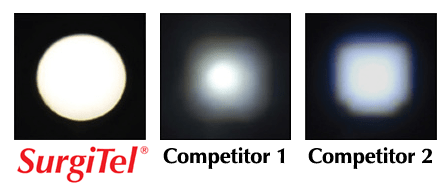
Figure 1: SurgiTel’s patented multi-lens, achromatic light optics system allows for a uniform beam.
Requirements of LED Headlights as Dental Illumination
White LED lights consist of two spectral bands: “Blue” spectral band and “Green-Red” spectral band. Figure 2 shows spectral distributions of various brand LED headlights which are being used by dental professionals today.2 As dental illumination, LED headlights should meet two basic requirements. The first requirement is to help show the accurate color of objects such as teeth and tissues. The second requirement is to minimize the blue light hazard.3-7 Figure 3 shows the blue light hazard function and the visual efficiency (photopic response) function of eye with spectral distributions of four example lights.8 The blue spectral band of LED lights is just under the blue light hazard function. It is noted that eyes have a good defensive mechanism against UV and visible lights (excluding blue light), but the eyes are defenseless against blue light because eyes are not sensitive to the blue light.5
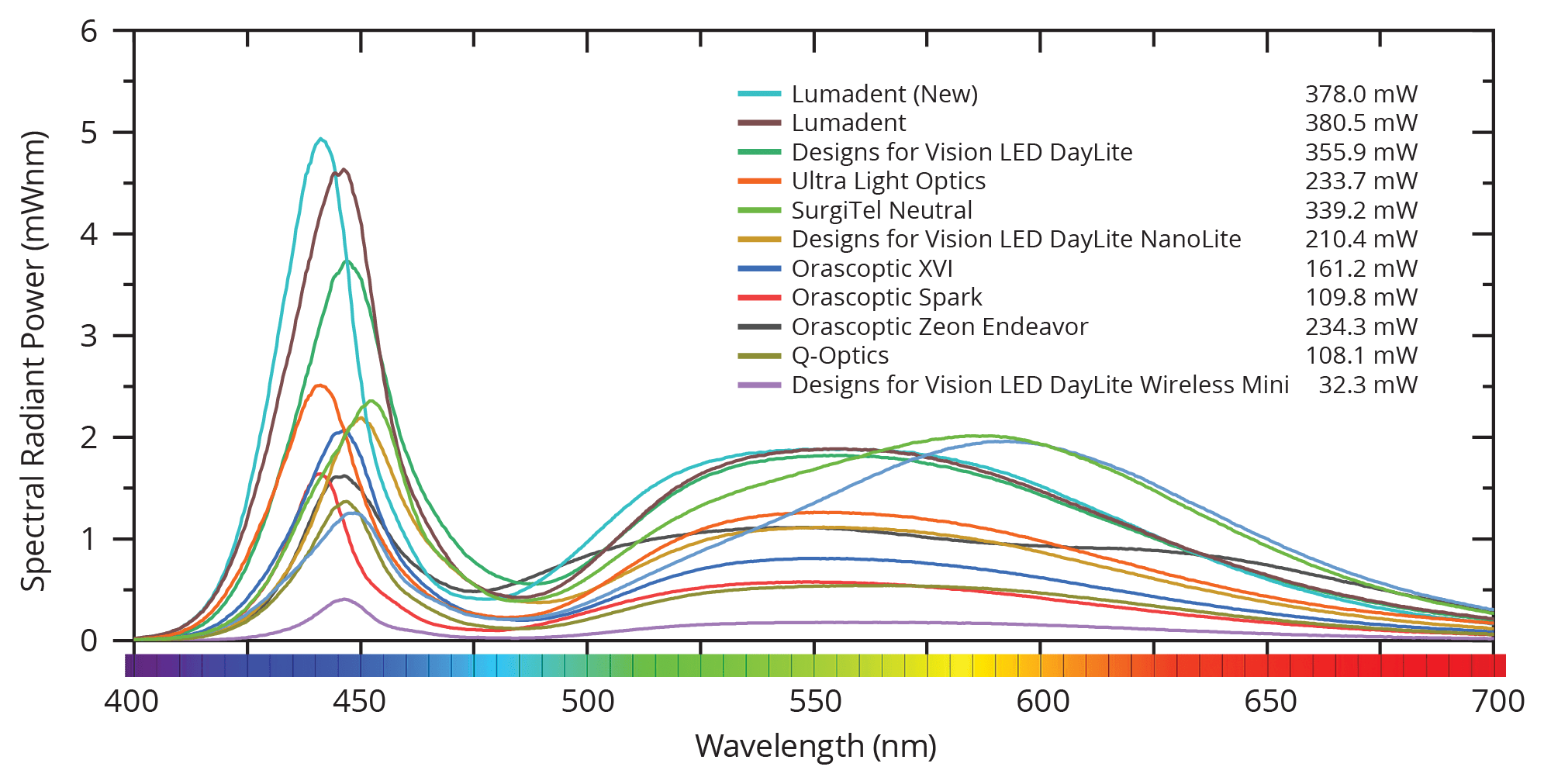
Figure 2: Spectral distributions of various brand LED headlights which are used by dental professionals.12
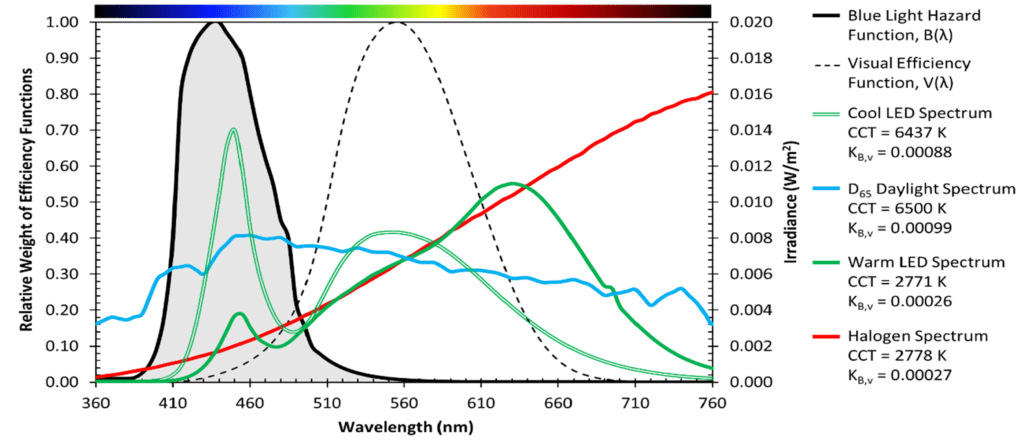
Figure 3: Four spectral distributions and blue light hazard & visual efficiency (Photopic Response) functions.
To meet both the first and second requirements, the beam of LED headlights should have a balanced color spectrum – the blue spectral band peak is similar to the green-red spectral peak. Figure 4 shows the ratio (or relative risk factor by LED blue light) of blue spectral peak over green-red spectral band peak for various brands of LED lights which have been used by dental professionals. SurgiTel neutral LED lights offer the most color-balanced beam which has been proven to have the best color accuracy.9, 10 Figure 5 shows example images under the illumination of SurgiTel neutral LED and under the illumination of LumaDent lights. As the ratio increases, the blue light hazard increases. Figure 6 shows the relationship between CCT (corrected color temperature) and relative risk factor by the LED blue light (ratio of blue spectral band peak over green-red spectral band peak). Exposure to LED lights with strong blue spectral bands for an extended period of time can create age-related macular degeneration (AGD). Figures 7 and 8 show the physical effect of blue light on retina cells and the visual effect of AMD respectively.11

Figure 4: Relative Risk Factor by LED Blue Light for various brands of LED light.13
Ratios taken from reflected light at 35cm. Kelvin color temperature measured from direct viewing.
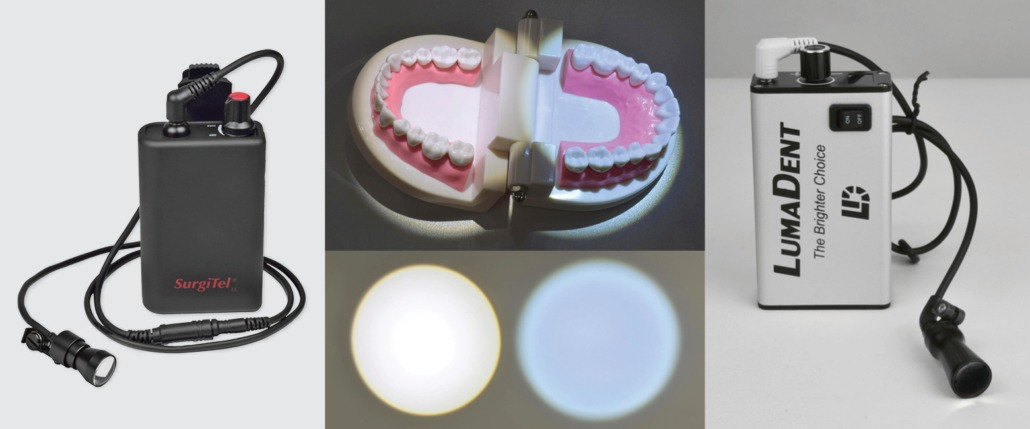
Figure 5: Example images under the illumination of SurgiTel neutral LED light and the illumination of LumaDent LED light.
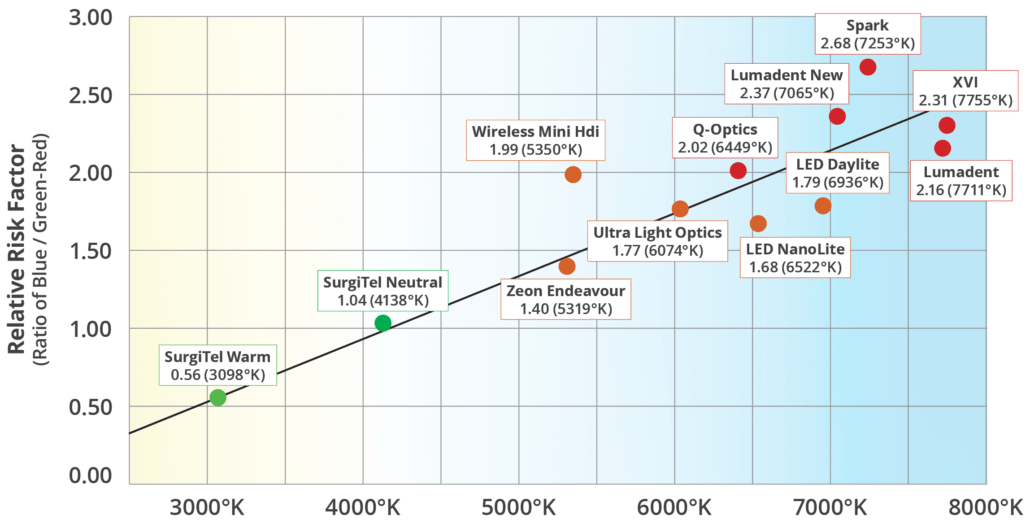
Figure 6: Relationship between Blue/Green-Red Ratios and Kelvin (K) color temperature. Ratios taken from reflected light at 35cm. Kelvin color temperature measured from direct viewing.
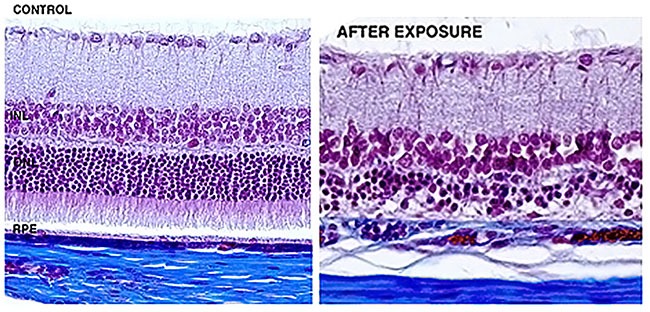
Figure 7: Effect of blue light on retina cells.11
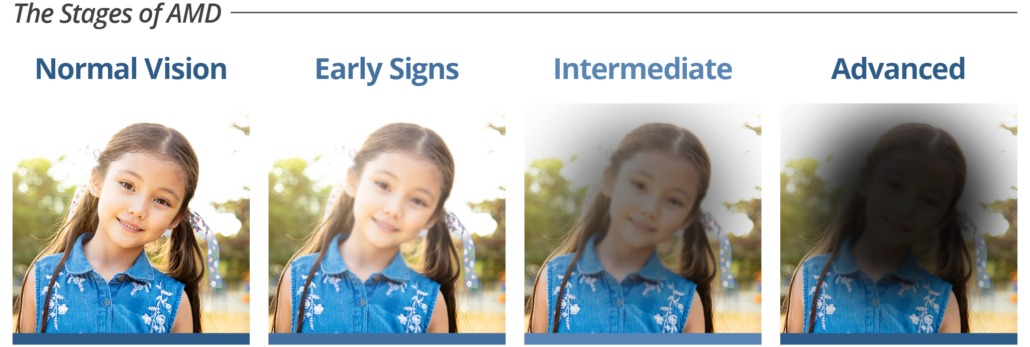
Figure 8: Visual effect of age-related macular degeneration (AMD).
Requirements for Surgical LED Headlights
Contrary to dental, where blue light can be harmful, blue light is helpful for surgical procedures. Cool LED lights will enhance the image of veins and nerves. Because red tissues absorb most of the blue light, surgeons face less of a blue light hazard. SurgiTel recently released two new Surgical LED headlights, Click Here to learn more about them.
Long-Lasting Battery
A long-lasting battery is very important for long surgeries or procedures. You should not have to worry about the battery of your light running out. This is why our new Surgical Mini LED and Surgical Headband LED 2.0 have a battery life of up to 12 hours.
Lightweight
The ideal surgical LED headlight should be lightweight so as to not cause pain or add any unnecessary additional weight. Our Surgical Mini LED light is lightweight at only 14.6 grams and does not sacrifice brightness. The Surgical Mini LED light is 100,000 Lux with a Kelvin temperature of 5,700 to help enhance anatomical features.
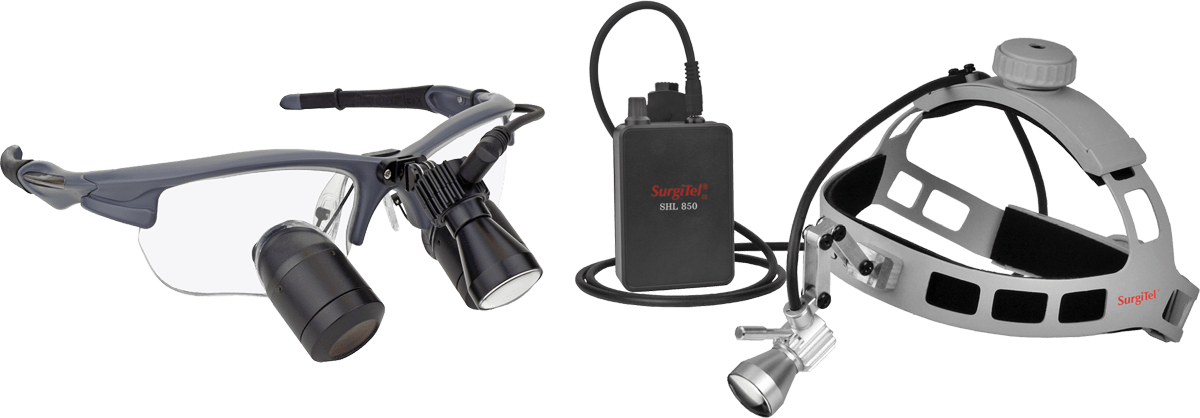
Left: Surgical Mini LED on ArmorFlex frame. | Right: Surgical Headband LED 2.0.
References
-
- Chang, Jin. “LED Headlights as Clinical Illumination: Questions Raised by Clinicians and Answers.” SurgiTel. ErgoPractice News, July 2021. https://www.surgitel.com/led-headlights-as-clinical-illumination-question-raised-by-clinicians/.
- Price Richard. “Spectral Distributions of Various Brand LED headlights.” Private Communication, May 2021
- Stamatacos, Catherine, and Janet L Harrison. “The Possible Ocular Hazards of LED Dental Illumination Applications.” The Journal of the Tennessee Dental Association 93, no. 2 (2013): 25–29. https://pubmed.ncbi.nlm.nih.gov/24611218/.
- Price, Richard. “The Blue Light Hazard in Medicine and Dentistry.” YouTube. Price Curing Lab, July 22, 2012. https://www.youtube.com/watch?v=VfCmL4Kz2iw.
- Chang, Jin. “Is Your LED Headlight Type Safe for Your Eyes?” SurgiTel. ErgoPractice News, November 2018. https://www.surgitel.com/is-your-led-headlight-type-safe-for-your-eyes.
- “ANSES on the ‘Effects on Human Health and the Environment (Fauna and Flora) of Systems Using Light-Emitting Diodes (LEDs).’” ANES. French Agency for Food, Environmental and Occupational Health & Safety, April 5, 2019. https://www.anses.fr/en/system/files/AP2014SA0253EN.pdf.
- Fluent, Marie T., Jack L. Ferracane, James G. Mace, Anjali R. Shah, and Richard B. Price. “Shedding Light on a Potential Hazard.” The Journal of the American Dental Association 150, no. 12 (December 2019): 1051–58. https://doi.org/10.1016/j.adaj.2019.08.012.
- “Solid-State Lighting: Brilliant Solutions for America’s Energy Future.” U.S. Department of Energy, January 2013. https://www1.eere.energy.gov/buildings/publications/pdfs/ssl/ssl-overview_brochure_feb2013.pdf.
- “Clinical Guidelines for Selecting Loupes.” Gordon J. Christensen Clinicians Report 9, no. 8 (August 2016): 1–2. https://www.cliniciansreport.org/products/dental-reports/clinical-guidelines-for-selecting-loupes-is-overhead-led-lighting-ready-for-dental-operatories-are-scanning-and-milling-for-you-august-2016-volume-9-issue-8.
- “Cordless LED Headlamps: A Bright Idea?” Gordon J. Christensen Clinicians Report 10, no. 5 (May 2017): 1–2. https://www.cliniciansreport.org/products/dental-reports/cordless-led-headlamps-a-bright-idea-wipe-disinfection-killing-or-spreading-the-germs-radiation-are-you-and-your-patients-and-staff-protected-%E2%80%93-may-2017-volume-10-issue-5.
- Neelam, Kumari, Kah-Guan Au Eong, and Sandy Wenting Zhou. “The Role of Blue Light in the Pathogenesis of Age-Related Macular Degeneration.” Points de Vue. International Review of Ophthalmic Optics, 2014. https://www.pointsdevue.com/article/role-blue-light-pathogenesis-age-related-macular-degeneration#:~:text=Blue%20light%20may%20damage%20the,in%20the%20development%20of%20AMD.
- Price, Richard B., Daniel Labrie, Braden Sullivan, and David H. Sliney. “The Potential ‘Blue Light Hazard’ from LED Headlamps.” Journal of Dentistry 125 (October 2022): Article 104226. https://doi.org/10.1016/j.jdent.2022.104226.
- Price, R and Ferracane, J, The Blue Light Hazard: How Worried Should We Be?, Presented as IADR Keynote Presentation, July 23, 2021; Private Communication with Dr. Price, 2021.



